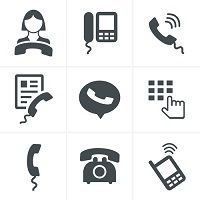Article
No Proof Yet that Telemedicine Helps COPD Patients
Author(s):
Physicians trying to improve quality of life for their COPD patients may find telemhealth techniques like scheduled phone check-ins useful, but studies have yet to show a clear benefit.

Telehealth may be a useful tool in helping patients with chronic obstructive pulomonary disease, but so far studies have not shown that to be true, Danish researchers found.
In a literature review of studies on the impact of telemedicine on quality of life (QoL) in patients with chronic obstructive pulmonary disease (COPD) researchers found a need for more work. Thorbjorn Gregersen of the Department of Pulmonary Medicine, at Hvidovre Hospital in Hvidovre, Denmark, and colleagues completed the review. It was published in the International Journal of Chronic Obstructive Pulmonary Disease on April 21, 2016.
The authors identified 18 articles to include in the review, six of which were classified as larger studies and two as smaller studies. A two-center, randomized trial which included 55 patients who received a telemedicine intervention and a control group of 55 patients who did not, showed that most of the QoL measures improved over the course of the study.
A second study with 298 participants, including 147 in the intervention group and 151 in the control group, showed “ambivalent results based on a different mode of intervention,” according to the authors. In that study, QoL measures were divided into psychological and somatic categories, and the results showed more improvement in terms of psychological QoL than in somatic.
Another study investigated an intervention that “consisted of 16 scheduled 30-minute phone calls over 12 months, focusing on psychoeducational training, self-management skills, cognitive coping skills, communication skills, and self-efficacy in illness management” said the authors. That study revealed no statistically significant improvements in the intervention group. Three other studies yielded similar results.
Of the 12 smaller studies, the majority showed no statistically significant differences for the intervention groups, but some did indicate a need for further studies.
The researchers say, “After reviewed this bulk of the literature on the present topic, it becomes evident that telehealth and related terms encompass a variety of instruments and modes of application.”
They go on to say that similar services can be provided to both a control group and to a group which receives the service through some telemedical means, or a service can be provided through a telemedicine application in addition to the service that the control group is receiving. These two different methods of evaluating the effectiveness of telemedicine yield predictably varying results.
The researchers go on to say that “telehealth is no Holy Grail” but did note that there are several opportunities for additional research that could reveal valuable uses for telemedicine for patients with COPD.




